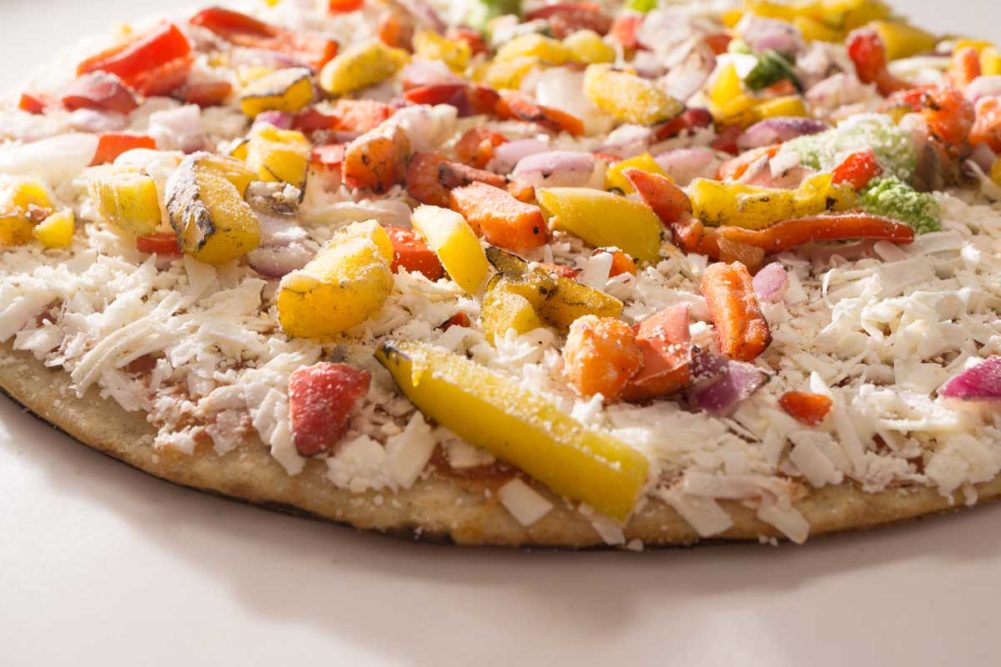There may not be a meal more suited for a pandemic than frozen pizza. It can be stored for long periods of time, and it comes in all types. From cauliflower crusts to a cornucopia of toppings, consumer options are seemingly endless.
Frozen pizza sales have experienced unprecedented growth since coronavirus (COVID-19) and stay-at-home orders began. Part of its recent success is that it neatly aligns with why people purchasing more frozen food. According to the American Frozen Foods Institute, the top six reasons include the long shelf life of frozen foods, consumers’ desire to stock up in case of food shortages, consumers’ need to limit the number of trips to the grocery store, the ease of preparation at home, the time saved for cooking and cleanup, and consumers’ belief that frozen packaged foods are safer than fresh baked-in-store items.
Because of these factors, frozen pizza sales in the four weeks ending April 5 soared 94.2% over the same period in 2019, according to IRI. Through June, frozen pizza continued to see more than 24.5% growth in dollar sales compared to 2019.
To meet this demand, bakers need high-output lines that can produce the wide variety of pizzas demanded by the diverse market. Frozen pizzas have evolved from basic cheese and pepperoni varieties to many other healthy dough and topping alternatives. At the same time, advances in automated pizza lines have increased throughputs while decreasing changeover times.
“Pizza systems can be extremely high throughput,” said David Moline, vice president of sales and marketing at Moline Machinery. “We have systems in operation that are in excess of 30,000 lbs an hour.”
And those levels of throughput are needed in today’s market. From mixing to dividing or sheeting to the oven and eventually the freezer, every step of the process is important to maintain consistency and meet pandemic-level demands.
Creating the right crust
For frozen pizzas, ingredient technology can improve crust characteristics during and after freezing. Jeff Zeak, national development manager, bakery, Reiser, said various starches, gums, pectin, proteins and fibers assist with moisture management in the dough.
“Moisture management reduces formation of ice crystals during freezing which can contribute to freezer burn and weeping of excess moisture during baking,” Mr. Zeak said.
Moisture also affects dough viscosity, he added. Soft, wet, sticky doughs, as well as stiff or dry dough characteristics often cause difficulties in handling on downstream processes like dividing, rounding, conveying and transferring. By designing a pizza processing system with the dough’s rheology in mind, bakers can set themselves up for success.
“Softer doughs are more delicate to handle, so interfaces like belt-to-belt transfer are designed to keep shape because things like oven loading and unloading are more complex,” said Matt Zielsdorf, director of sales, Fritsch, a Multivac company. “The key is keeping the structure of long fermented, delicate and softer dough.”
In general, higher hydration doughs benefit from longer proofs. The higher the moisture content, the heavier the crust and the longer the proof.
“Weight is correlated with proofing and baking time,” Mr. Moline said. “It may vary from as little as 15 to 20 minutes all the way up to 30 or 40 minutes of dwell time. We make proofing systems that offer variable dwell time, and we can load them at different points, which provides varying dwell times.”
Stiffer doughs handle more tension and stretching and contribute to a flakier crust for thin crust pizzas. The dough’s stiffness is mainly determined by its water and fat content.
“Less of both makes it more difficult to sheet the dough to the required thickness,” said Hans Besems, executive product manager, AMF Bakery Systems.
To ensure consistent hydration levels, Reading Bakery Systems (RBS) offers its continuous mixer for pizza operations.
“The advantages manufacturers enjoy include fully automated operation, very consistent dough and lower energy usage,” said Jim Warren, vice president of Exact Mixing, RBS.
Don’t forget to consider temperature when mixing frozen pizza dough. The RBS continuous mixer makes dough at a consistent 65 to 75°F. Mr. Warren said frozen dough manufacturers often like the dough to be as cool as possible before entering the freezer, especially if it isn’t par-baked first. The continuous mixer chills the dough with a jacket that can be controlled automatically.
This article is an excerpt from the September 2020 issue of Baking & Snack. To read the entire feature on pizza technology, click here.





